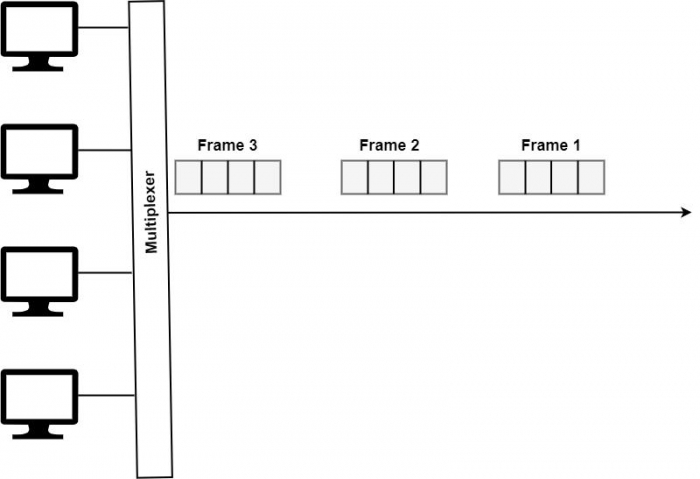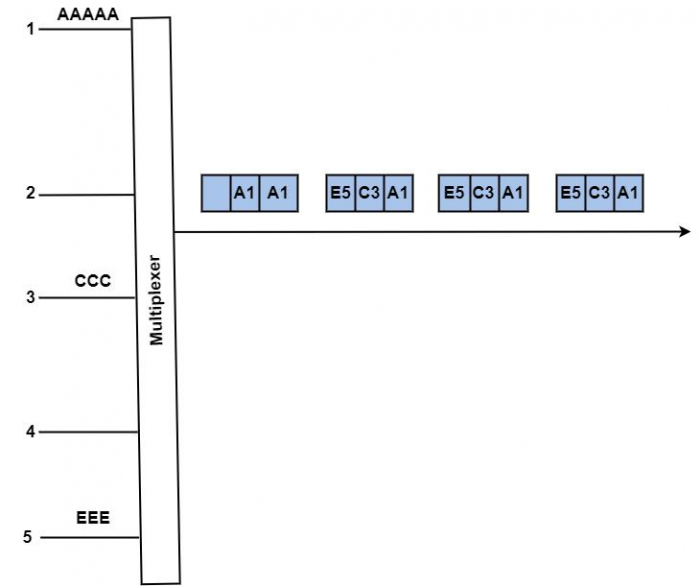
- Data Comm & Networks Home
- DCN - Overview
- DCN - What is Computer Network
- DCN - Uses of Computer Network
- DCN - Computer Network Types
- DCN - Network LAN Technologies
- DCN - Computer Network Models
- DCN - Computer Network Security
- DCN - Components
- DCN - Connectors
- DCN - Switches
- DCN - Repeaters
- DCN - Gateways
- DCN - Bridges
- DCN - Socket
- DCN - Network Interface Card
- DCN - NIC: Pros and Cons
- DCN - Network Hardware
- DCN - Network Port
- Computer Network Topologies
- DCN - Computer Network Topologies
- DCN - Point-to-point Topology
- DCN - Bus Topology
- DCN - Star Topology
- DCN - Ring Topology
- DCN - Mesh Topology
- DCN - Tree Topology
- DCN - Hybrid Topology
- Physical Layer
- DCN - Physical Layer Introduction
- DCN - Digital Transmission
- DCN - Analog Transmission
- DCN - Transmission media
- DCN - Wireless Transmission
- DCN - Transmission Impairments
- DCN - Multiplexing
- DCN - Network Switching
- Data Link Layer
- DCN - Data Link Layer Introduction
- DCN - Data Link Control & Protocols
- DCN - RMON
- DCN - Token Ring Network
- DCN - Hamming Code
- DCN - Byte Stuffing
- DCN - Channel Allocation
- DCN - MAC Address
- DCN - Cyclic Redundancy Checks
- DCN - Error Control
- DCN - Flow Control
- DCN - Framing
- DCN - Error Detection & Correction
- DCN - Error Correcting Codes
- DCN - Parity Bits
- Network Layer
- DCN - Network Layer Introduction
- DCN - Network Addressing
- DCN - Routing
- DCN - Internetworking
- DCN - Network Layer Protocols
- DCN - Routing Information Protocol
- DCN - Border Gateway Protocol
- DCN - OSPF Protocol
- DCN - Network Address Translation
- DCN - Network Address Translation Types
- Transport Layer
- DCN - Transport Layer Introduction
- DCN - Transmission Control Protocol
- DCN - User Datagram Protocol
- DCN - Congestion Control
- DCN - TCP Service Model
- DCN - TLS Handshake
- DCN - TCP Vs. UDP
- Application Layer
- DCN - Application Layer Introduction
- DCN - Client-Server Model
- DCN - Application Protocols
- DCN - Network Services
- DCN - Virtual Private Network
- DCN - Load Shedding
- DCN - Optimality Principle
- DCN - Service Primitives
- DCN - Services of Network Security
- DCN - Hypertext Transfer Protocol
- DCN - File Transfer Protocol
- DCN - Secure Socket Layer
- Network Protocols
- DCN - ALOHA Protocol
- DCN - Pure ALOHA Protocol
- DCN - Sliding Window Protocol
- DCN - Stop and Wait Protocol
- DCN - Link State Routing
- DCN - Link State Routing Protocol
- Network Algorithms
- DCN - Shortest Path Algorithm
- DCN - Routing Algorithm
- DCN - Leaky Bucket Algorithm
- Wireless Networks
- DCN - Wireless Networks
- DCN - Wireless LANs
- DCN - Wireless LAN & IEEE 802.11
- DCN - IEEE 802.11 Wireless LAN Standards
- DCN - IEEE 802.11 Networks
- Multiplexing
- DCN - Multiplexing & Its Types
- DCN - Time Division Multiplexing
- DCN - Synchronous TDM
- DCN - Asynchronous TDM
- DCN - Synchronous Vs. Asynchronous TDM
- DCN - Frequency Division Multiplexing
- DCN - TDM Vs. FDM
- DCN - Code Division Multiplexing
- DCN - Wavelength Division Multiplexing
- Miscellaneous
- DCN - Shortest Path Routing
- DCN - B-ISDN Reference Model
- DCN - Design Issues For Layers
- DCN - Selective-repeat ARQ
- DCN - Flooding
- DCN - E-Mail Format
- DCN - Cryptography
- DCN - Unicast, Broadcast, & Multicast
- DCN - Network Virtualization
- DCN - Flow Vs. Congestion Control
- DCN - Asynchronous Transfer Mode
- DCN - ATM Networks
- DCN - Synchronous Vs. Asynchronous Transmission
- DCN - Network Attacks
- DCN - WiMax
- DCN - Buffering
- DCN - Authentication
- DCN Useful Resources
- DCN - Quick Guide
- DCN - Useful Resources
Asynchronous Time Division Multiplexing
What is Asynchronous TDM
An asynchronous TDM is also called as a Statistical TDM. ATDM has been designed to solve the problem of wastage of the multiplexed channels in synchronous TDM.
Slot Allocation in ATDM
In ATDM, if there are n input lines, then each slot can contain m frames, where m is less than n, as shown in the figure below.

Frame Filling Mechanism
In ATDM, the multiplexer scans all the input lines and accepts the portions of data till the frame is filled. When the frame is filled, it is sent across the link. If the senders don't have enough data to fill the frame, it is transmitted as partially filled. This is depicted in the figure below.

Flexible Slot Usage
Hence, in ATDM, all sending devices can send data in all slots. As we can look from the figure, the slots are variable. Therefore, the receiver cannot identify the characters by counting them.
Addressing in ATDM
An efficient addressing mechanism is required, which should supply a unique address to each time slot. These addresses are temporary and discarded by demultiplexer after reading them correctly.
Asynchronous and Synchronous TDM
The variation between Asynchronous TDM and Synchronous TDM is that few slots in Synchronous TDM are unused, but in Asynchronous TDM, the slots are entirely used. This leads to the shorter transmission time and practical uses of the volume of the medium.
It firmly assigns the time slots on demand to free the input channels. Hence the channel size can be stored. Similarly, as with synchronous TDM, statistical multiplexers can have many input/output (I/O) lines with a buffer related to each of them.
During the input, the multiplexer filters the input buffers and accumulates the record until the frame is filled. Later on the frame is transmitted. At the receiving end, the demultiplexer obtains the frame and circulates the data to the suitable buffer.
Address Overhead in ATDM
In Asynchronous TDM, each slot's data should have an address part, which recognizes the source of information. Therefore, the data arrives from and is circulated to I/O lines unpredictably. The address data is needed to guarantee suitable delivery. This generates extra overhead per slot.
Disadvantages of TDM
One disadvantage of the TDM method is that many of the time slots in the frame are invalid. A specific terminal has no data to transmit instantly and will send an empty time slot.
Adding the address bits to each time slot puts overhead on the system and decreases the system's efficiency.